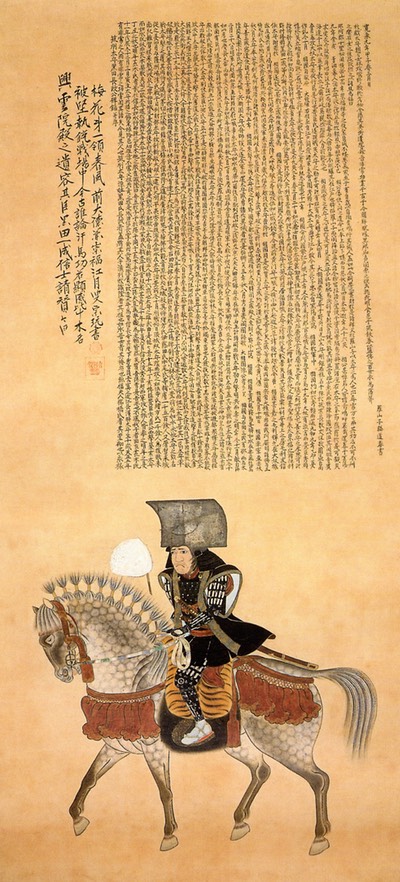At the foot of the narrow uphill road towards the Kamasake pass, a tori-i gate on the left side of the road marks the beginning of a path that leads up to the Musashi Shrine. Though the shrine was built lang after Musashi had died it celebrates, in good Shintō tradition, his life and spirit and is therefore alone worth a visit, if only because it is a tranquil hike up the densely wooded mountain.
The shrine, which was erected long after Musashi’s death, is locally known for being the site of what are claimed to be the graves of Hirata Muni, his wife Omasa, and most controversially, the grave of Miyamoto Musashi himself.
It is easiest to dispel the notion that Musashi’s remains would rest at this site, however close to his birthplace of Miyamoto (although even that is hotly contested by some). Of all the records connected to Musashi, there is not one that claims his remains were brought back from Kumamoto (where he definitely died) all the way back to the village of Miyamoto. It is most likely, therefore, that the latter was placed during the Musashi boom in the wake
More difficult it is with the grave of Hirata Muni. The Tōsakushi (1851) mentions an old tombstone among the Jigami hills, above the old family yashiki in Miyamoto, and assumes it must mark Muni's grave. Its author, Masaki Teruo, came to this conclusion by studying the family lineage of the Hirata clan, which mentions the same date as inscribed on the gravestone. Intriguingly, the Buddhist name engraved on the stone reads Shingen-in Ichinyo Dōni (真源院一如道仁居). That exact same name is also recorded in records of the Hirata family lineage. There, however, it is connected to a certain Buni (武二), and not Muni (無二).
The gravestone, then, does not seem to mark the grave of Muni (who almost certainly died in Kyushu, probably in Kitsuki), but that of Muni’s father. That would make the most sense chronologically, for the date of death on the withered stone—as well as that mentioned in the Hirata family lineage—reads “eighteenth day of the fourth month of the eighth year of the Tenshō era [May 31, 1580].
Any queries of remarks? Launch or join a discussion at our new FORUM



